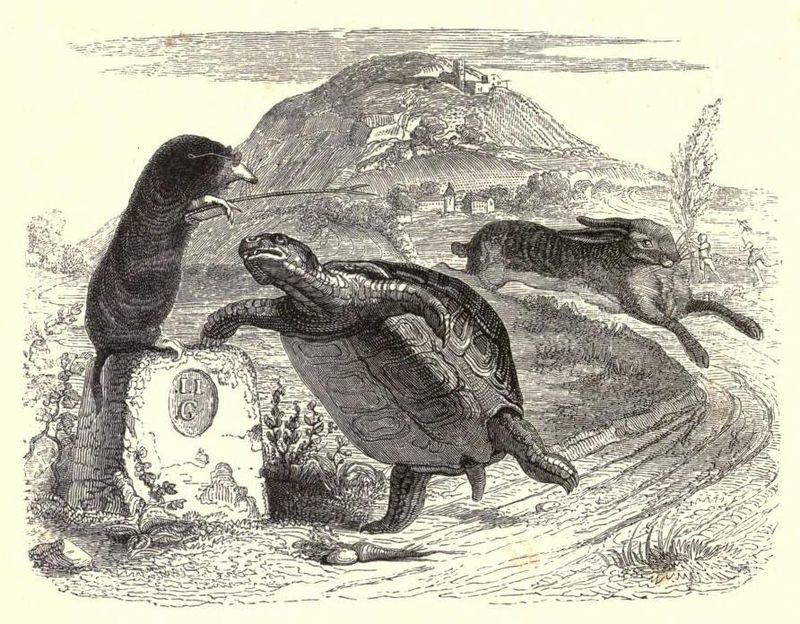Content Creation
Stories with Teeth: From Fables to Rhetoric, Purpose-Told Stories Have the Power to Influence the Audience
By Michael Box on August 24, 2017
It's no secret that the age of interrupt advertising is over. In 2016, adblock usage increased by 30 percent. More than half a billion devices, belonging to 11 percent of the Internet population, are now blocking ads on the web. Netflix, the ad-free streaming service, has more than 100 million subscribers.
Marketers will soon need to find somewhere else to spend the $600 billion currently spent on interrupt advertising—and the answer is stories.
We already recognize that stories are a big deal. They move us at the neurological level. They serve as an adhesive for group identity. They help us make sense out of life.
What's a Story?
A story is not a corporate timeline. And don't conflate stories with narratives (stories are narratives, but not all narratives are stories). So what is a story?
According to screenwriting guru Robert McKee, "A story is a sequence of causally connected, dynamic events that change a protagonist's life."
Causally connected means not random. Ever wondered why other people's dreams are so boring? It's because the events are random.
Dynamic refers to those turning points that build towards the story's climax, which hold the audience's attention because, in the words of McKee, "Change focuses the mind." Think of a sudden change of water temperature in the shower.
And these events must change a protagonist's life. Without that final change, the audience will be furious. Why should they sit through a story to find the protagonist has learned nothing?
So all you need to do is tell stories and your marketing will be a hit. Great. Next! Not so fast. There's more to it than that. If your content were simply a compendium of stories without purpose, your audience would be entertained, but then what? A story without a purpose is like a shark without teeth. It might bring momentary distraction, but it doesn't bite. If you want to influence attitudes or motivate action, you need to give your stories teeth.
Stories with Teeth
A purpose-told story is not just a marketing gimmick. For thousands of years, there have been stories with teeth, stories with a purpose. Jesus communicated in parables—short stories with moral lessons. Politicians of all stripes have also used stories in their rhetoric. Many brands are already executing purpose-told stories in their content. One feature of stories with a purpose is that when they present the audience (or the protagonist as a proxy for the audience) with a choice, there's a clear line between right and wrong, good and evil, or—less dramatically—profitable action and non-profitable action. And that's the point. Whether you are arguing that "too many cooks spoil the broth" or "many hands make light work," persuasion is all about convincing someone that your ice cream or your car insurance is the best. So let's take a look at some stories with teeth from the ancient to the modern world.
Fables
Aesop was a storyteller from Ancient Greece whose fables permeate our culture. Ever heard of a wolf in sheep's clothing? That was his. One of my favorite fables from Aesop is the Tortoise and the Hare. You should know the story but here it is:
"The Hare was once boasting of his speed before the other animals. [...] 'I challenge anyone here to race with me.' The Tortoise said quietly, 'I accept your challenge.' 'That is a good joke,' said the Hare; 'I could dance round you all the way.' 'Keep your boasting till you've beaten,' answered the Tortoise. So a course was fixed and a start was made. The Hare darted almost out of sight at once, but soon stopped and, to show his contempt for the Tortoise, lay down to have a nap. The Tortoise plodded on and plodded on, and when the Hare awoke from his nap, he saw the Tortoise just near the winning-post and could not run up in time to save the race. Then said the Tortoise: 'Plodding wins the race.' "
Image attribution: Jean Grandville via Wikimedia Commons
Fables like these were told in order to deliver an ethical message by showing the effects of virtuous and unvirtuous behavior. Frequently, the moral of this fable is interpreted as "plodding wins the race" or "slow and steady prevails." I tend to think the moral is more about the hare than the tortoise. The tortoise didn't "win" the race; the hare lost it. To me the moral is "don't brag (until you win)." Regardless, the story presents the audience with a choice: Act like the determined, humble, hard-working tortoise and win, or act like the boastful, contemptful hare and lose.
Political Stories
Purpose-told stories find a home in politics, too. Known as the Great Communicator, Ronald Reagan was a skilled orator. Throughout his political career, he used humor to woo voters and gently ridicule opponents—he even used it as a weapon in the Cold War. In televised speeches, he claimed that he had a hobby of "collecting stories told in the Soviet Union" that revealed the Russians had a "great sense of humor" along with a "cynical attitude towards their system."
These stories were funny, short, and memorable—and the punchline was delivered with his easygoing, grandfatherly style. But these stories were not told simply to entertain the audience.
Marlin Fitzwater, the White House spokesman at the time, said that the president prized these stories because they give him ''a way of pointing up the differences between Russian and American society, but without a harsh edge.'' Here's an example.
"I heard one about a fellow who went to the KGB to report that he lost his parrot. The KGB asked him why he was bothering them; why didn't he just report it to the local police? He answered, I just want you to know I don't agree with a thing my parrot has to say.”
The story is funny—it's a joke—but the underlying message is nothing to smile about. All Reagan's stories—whether about waiting times, free speech, or police brutality—had a political message and were part of his Cold War strategy of exposing and undermining the "Evil Empire." In his telling, the obvious choice between American democracy and Soviet communism is the former.
Advertising
Purpose-told stories in a brand context—like the fable and the political story—are not merely entertainment (although they may be entertaining). They are marketing tools designed to influence or motivate a consumer to action. One of the key ways that purpose-told stories are different from regular stories is at the moment of crisis. In fiction, at the crisis we have a dilemma. The protagonist must choose between two irreconcilable goods (Career or family? Love or duty?) or the lesser of two evils (Confession or living with guilt? Torture or ratting on your friends?). In purpose-told stories, however, you make it easy. Here's an example.
What better way to make your point than by taking a well-known fairy tale with a crisis and using your product to eradicate the dilemma? In the original version, in a crisis of temptation (reminiscent of Eve and the Serpent), Snow White is unsure whether to accept the apple offered by the peasant woman. In this modern rendering, Snow White has an easy choice, as the revolting-looking apple itself confessed that is was full of poison. The message is simple: Choosing the mandarin is a no-brainer.
From Ancient Greece to the Cold War to the age of YouTube, there's a long tradition of influencers telling purpose-told stories to motivate audiences to action. Here's an easy choice: Stick with interrupt advertising or join in this tradition.
Want to learn more about how to use purpose-told stories in your brand messaging? Attend Storynomics with Robert McKee and Tom Gerace.
Featured image attribution: Johannes Plenio


